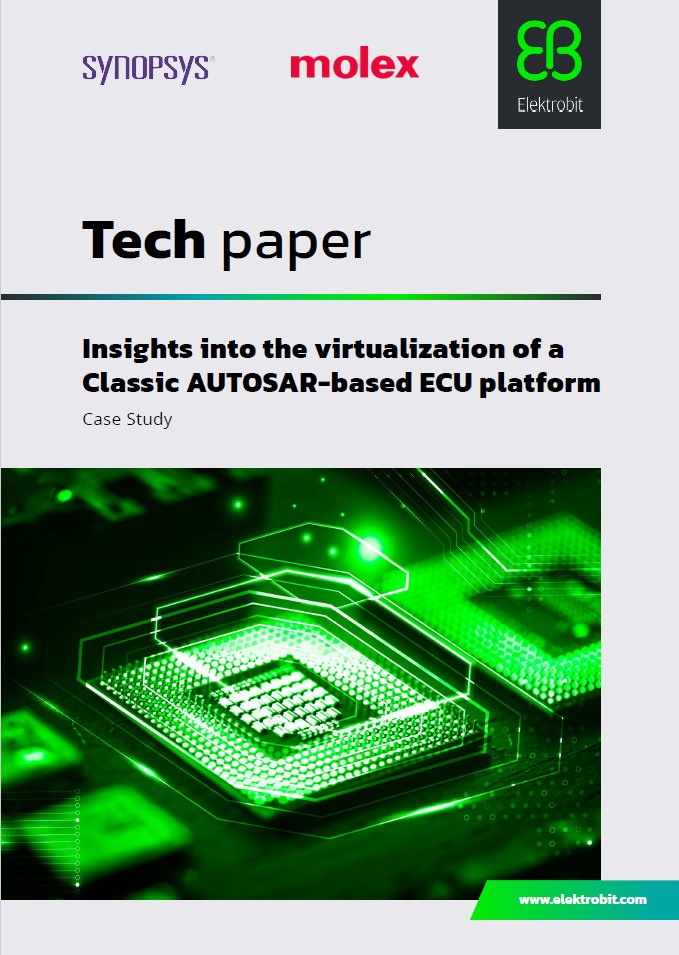This case study highlights the integration of virtualization into a Classic AUTOSAR platform, creating a unified workflow for real and virtual targets. By incorporating a level 3 virtual ECU, the Molex wireless charging project accelerates developer onboarding, enables local testing of AUTOSAR configurations, and reduces dependency on scarce hardware.

Table of contents
- Introduction 4
- Molex ECU platform 4
- Principles of ECU virtualization for Classic AUTOSAR 5
- Rolling out virtual ECU in the Molex platform project 6
- Using ECU virtualization 8
- Virtualization to unlock the SDV
ECU virtualization and software-in-the-loop testing are becoming crucial in the automotive industry. OEMs are increasingly demanding virtual ECUs alongside real ones, making this the new standard for suppliers. This trend is advancing further, with new E/E architectures being developed using fully virtualized models before hardware is available. This approach decouples hardware from software, leveraging the benefits of software-defined vehicles. Elektrobit, Molex, and Synopsys have collaborated to create a fully virtualized software development and test workflow, applying the ‘Shift-left’ paradigm to enhance development speed, test coverage, and developer experience for Molex’s wireless charging platform.
Webinar: How to achieve seamless deployment of Level 3 virtual ECUs for automotive digital twins.
EB tresos – your entry into the world of Classic AUTOSAR
EB tresos Studio demonstrator – Elektrobit, click here.
Try EB tresos for free – Elektrobit, click here.
Click on the button to load the content from Pardot.


